Are you looking for the best telescope for kids to turn your child into a young astronomer?
Getting kids started in astronomy shouldn't be a chore.
For a child you'll want a good telescope that's simple to set up and even simpler to use.
But most importantly, a kid's first telescope should provide glorious views of the night sky without too much fuss.
It's important not to skimp on quality just because it's for a child. While it might be tempting to pick up a cheap, toy telescope set, these tend to have plastic lenses that are poorly aligned. Rather than encourage your child to take more interest in the night sky, the blurry, poorly magnified views might actually end up putting them off.
That doesn't mean you need break the bank however. Our list of the best telescopes for kids and children has options that will suit a range of budgets, or you can skip down to the end to get more advice about buying a telescope second-hand.
Read our advice on getting children started in astronomy or our guide to astronomy for beginners, and if you feel they're ready for their first telescope, see below for our pick of the best kids' telescopes. It might also be worth having a look at our guide to the best beginners' telescopes.
Visit our main reviews section for more of our telescope reviews. Or if you feel they would be better off starting with a pair of binoculars, read our guide to the best binoculars for astronomy.
If imaging the night sky is a potential point of interest, read our guide to the best telescopes for astrophotography.
Using a telescope with kids
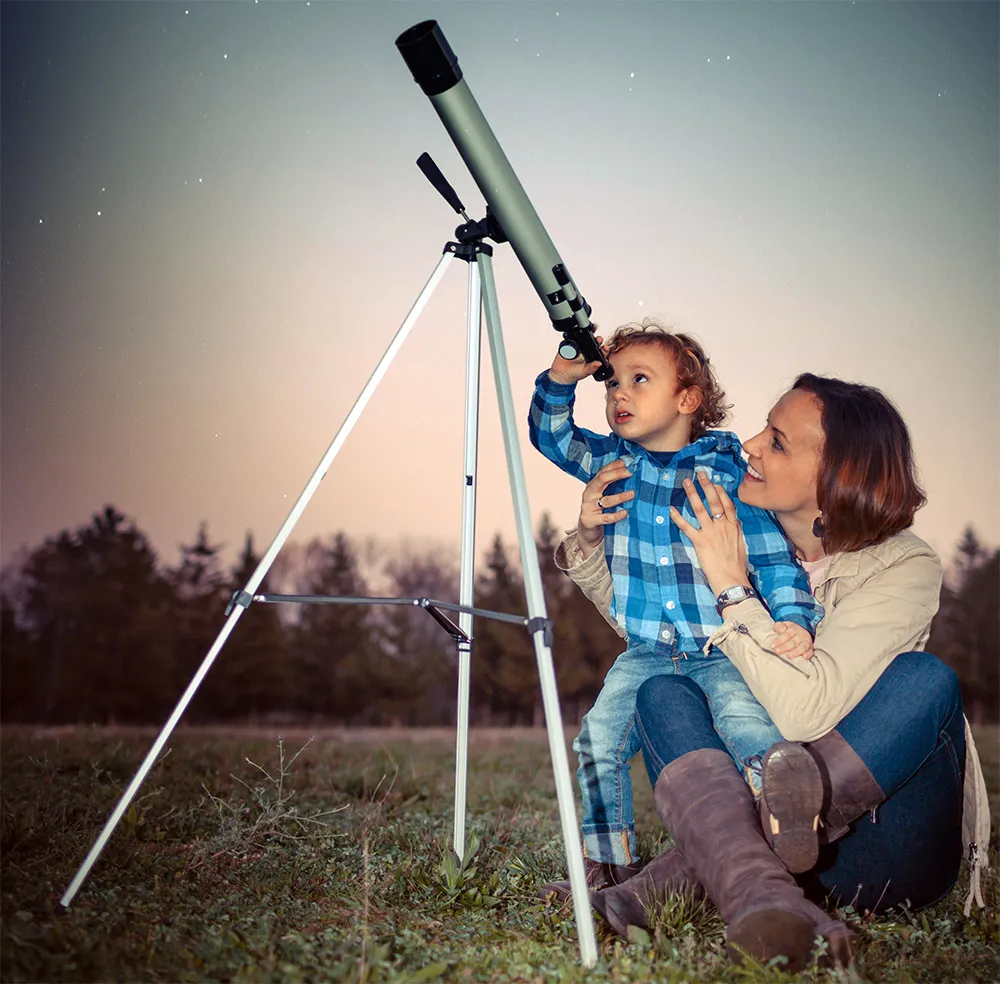
Children and young astronomers need to be comfortable and have their interest piqued when using a telescope for the first time, or they may quickly get bored! So ease of set-up is a big consideration when picking the best telescope for kids.
As you'll be observing outdoors, and potentially away from your home, bring mats, chairs and perhaps even sleeping bags and cushions so they can remain warm and comfortable both during and in between observing.
Before you begin, you could get them to experiment closing one eye; perhaps even use a toilet tube to help them practise. That way, the task of looking through the eyepiece won't seem as daunting.
Even then, closing one eye for long periods of time can cause young muscles to ache, so it might worth getting them to cover one eye with their hand while observing.
Do they have a favourite dolly or stuffed toy? Perhaps their cuddly friend could have a go first.

What can you see looking through the telescope? Pick a planet at opposition or a good star cluster like the Pleiades, as these are immediately interesting and bright objects that will attract their attention.
Older kids might benefit from a few amazing facts about the size or distance of the object they're looking at.
When choosing the best telescope for kids and children, look for an adjustable tripod and mount that will suit their height, or else bring a portable step so you don't have to hold them up to the eyepiece.
A good tip is also to hold the child's hand while observing. This will help them ease into it, and will also make them less likely to knock the telescope away from your chosen target!
Best telescopes for kids
Sky-Watcher Infinity-76P
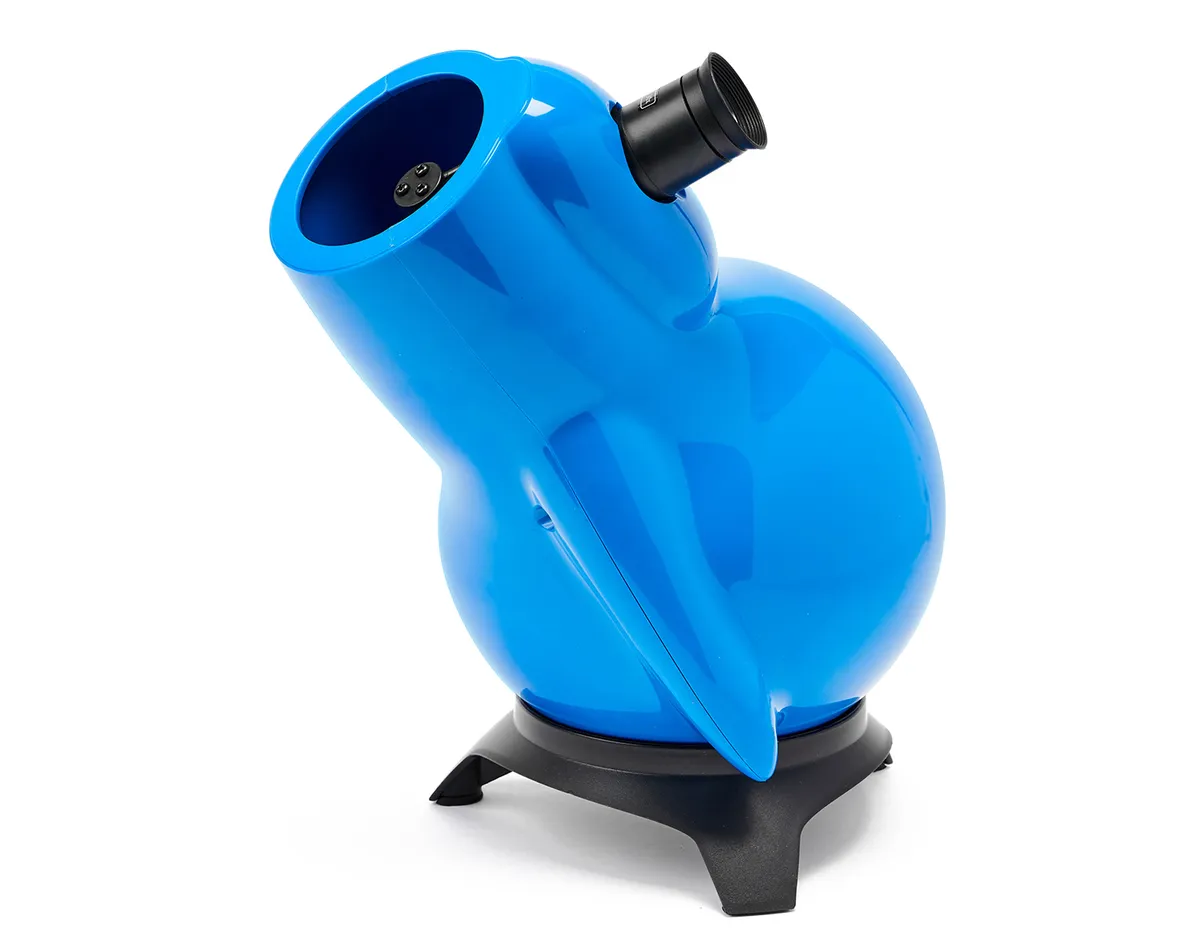
The Infinity-76P is designed for the youngest astronomers and has a distinctive shape that resembles a spaceship. It comes with stickers for decoration and the cardboard box can be folded up to use as a carry case. This is a low-power telescope that can be assembled in minutes; pop the telescope onto the curved base, insert the eyepiece and away you go.
The motion of the Infinity-76P is impressively smooth on its mount although it can’t be locked in position, which could pose an issue when small hands make a grab for the eyepiece and move the field of view. Viewing quality is what you’d expect for such a small system, however, we had pleasing sights of the Moon with enough crater detail to keep young minds interested.
Vital Stats
- Optics 76mm (3-inch), Parabolic mirror
- Focal length 300mm, f/4
- Mount Table top mount
- Extras 30x erecting prism, tabletop cradle, gift box
- Weight 1.72kg
Bresser Junior 60/700 AZ1 refractor
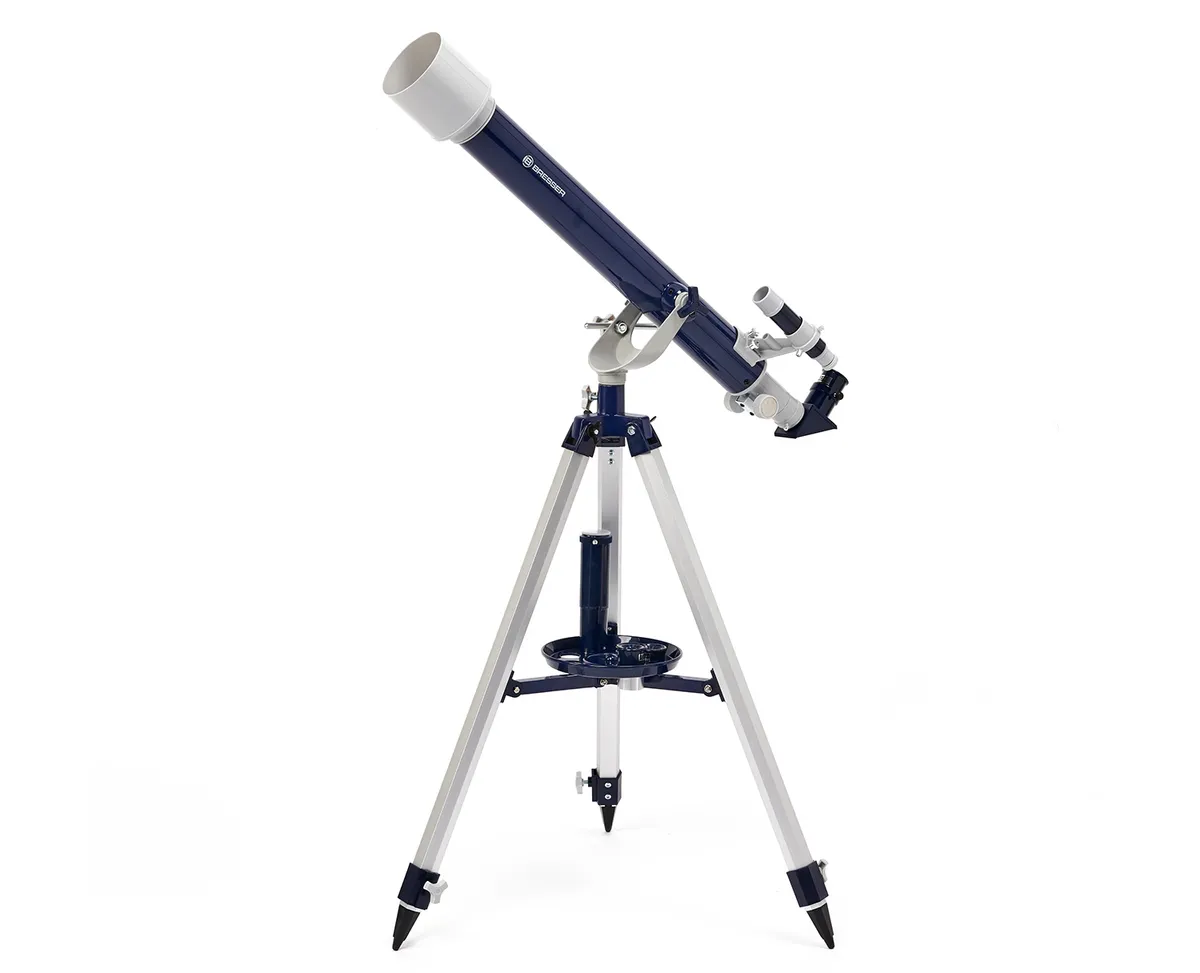
The fact that this Bresser telescope, tripod and mount all fit neatly into a carry case is a definite bonus when looking for the best telescope for kids and gives it a level of portability. But once this 60mm refractor is assembled, we doubt it’ll be taken down again. The reason being it’s constructed from about 20 parts that require assembly, making this more of a ‘Meccano mission’ than other kits.
Assembling the telescope took 20 minutes, which isn’t unreasonable, given the number of screws and bolts that comprise the build, but it’s unlikely you’ll want to pack it away again any time soon.
The Andromeda Galaxy looked fairly good through this telescope but the eyepieces gave a very narrow field of view. We did like the compass and planisphere, which are undervalued tools in an often technology-focused hobby.
Vital Stats
- Optics 60mm, Achromatic refractor
- Focal length 700mm, f/11.6
- Mount Alt-azimuth mount, aluminium tripod
- Extras 4mm, 12.5mm and 20mm eyepieces, 90º diagonal, 5x24 finderscope, errecting prism, pocket compass, hard carrying case
- Weight 5.1kg
Sky-Watcher Heritage-76
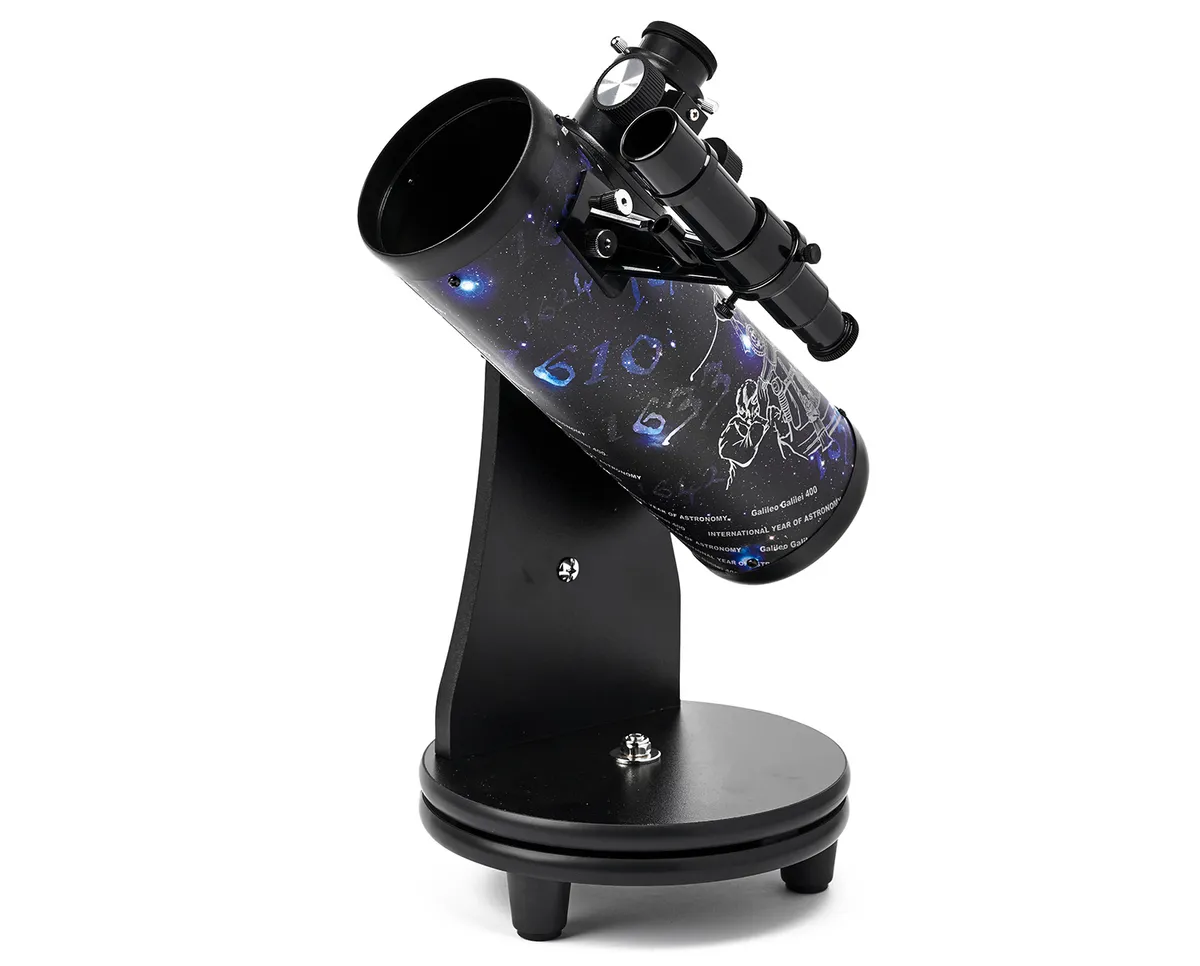
The Heritage’s overall finish is excellent and looks attractive. For instance, rather than a plastic base (commonly found on toy telescopes), this one is wooden and gives stability to the setup without making it cumbersome.Movement of the telescope in all directions is fluid, meaning that you can swing from one object to the next with minimal effort.
The 300mm focal length allows a decent field of view for popular objects such as the Moon, the Andromeda Galaxy and the Pleiades.The Heritage-76 comes supplied with functional, uncomplicated accessories suitable for beginners – a finderscope and two eyepieces.
While the finderscope is plastic and perhaps a little cheap, the eyepieces are fair quality.In use the focuser allows a decent level of control and is easy to manage for slight adjustments.
Vital Stats
- Optics 76mm
- Focal length 300mm
- Mount Tabletop Dobsonian-style mount
- Extras 10mm and 25mm eyepieces, 5x24 finderscope,
- Weight 1.75kg
Celestron AstroMaster LT 60AZ refractor
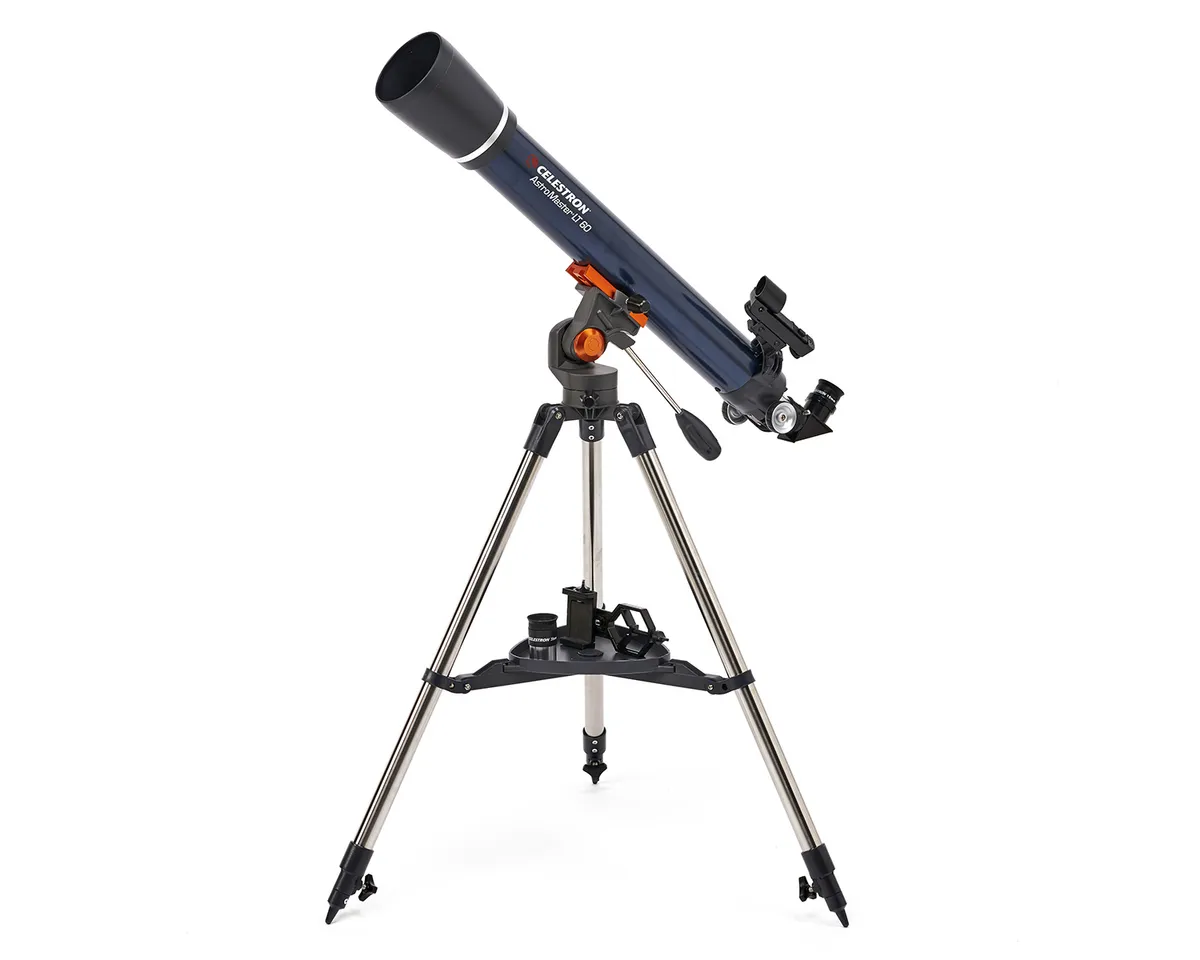
The AstroMaster is a refractor, meaning it looks like ‘a proper telescope’ as kids understand them. By that we mean it’s the traditional telescope-on-a-tripod setup.The kit is robust but lightweight and only comes in two main parts, allowing for quick and straightforward assembly. We needed a screwdriver, which is a slight minus, but it is still ready in minutes.
The eyepieces each provide sharp views of stars and great lunar detail with minimal distortion at the edges. The tripod is light and while the equipment tray provides stability, care is needed not to nudge and move the setup when it’s in use.
The supplied smartphone adapter really grabbed our attention, as it allows users to delve into astrophotography as well as dabble with astronomy.This will enhance the experience for young users looking for the best telescope for children, especially once they have provided an image that proud parents can share on social media.
Vital Stats
- Optics 60mm
- Focal length 700mm, f/12
- Mount Altaz with tripod
- Tripod Pre assembled tripod, with accessory tray
- Extras 20mm and 10mm eyepiece, red-dot finderscope, 90º diagonal
- Weight 3.22kg
National Geographic 90mm Automatic Telescope
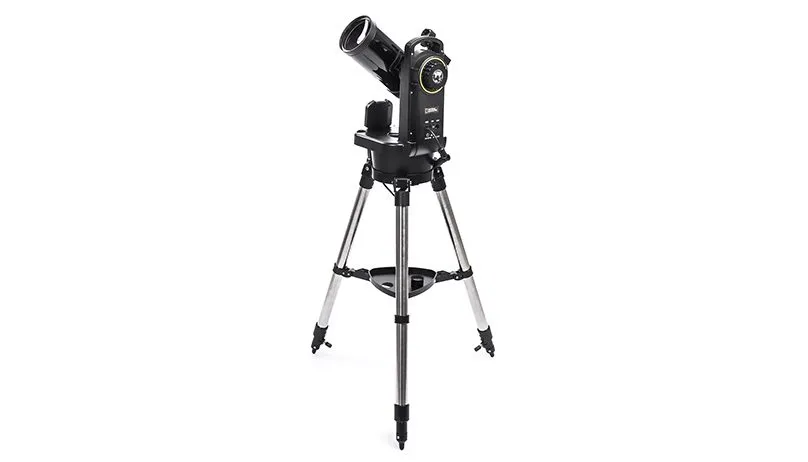
This relatively basic model is perfect for astronomy beginners and a great telescope for kids and children. It comes with two eyepieces, an instruction manual, a Moon filter and a CD containing the planetarium software Stellarium. Assembly is straightforward, making this a great 'set up and go' system, and you can be observing sooner than you might expect, while the automated 'GoTo' system makes finding specific targets a doddle.
Vital Stats
- Optics 90mm (3.5-inch) Maksutov-Cassegrain
- Focal length 1,250mm (f/13.8)
- Mount Computerised single fork arm altaz
- Tripod Extendable tripod
- Power 6xAA batteries or DC connection
- Extras Red dot finder, 25mm and 12mm 1.25-inch fit eyepieces, moon filter, Bresser planisphere, bubble level and compass for levelling
- Weight 8.2kg
Read our full National Geographic 90mm review
Celestron 114 LCM Computerised Telescope
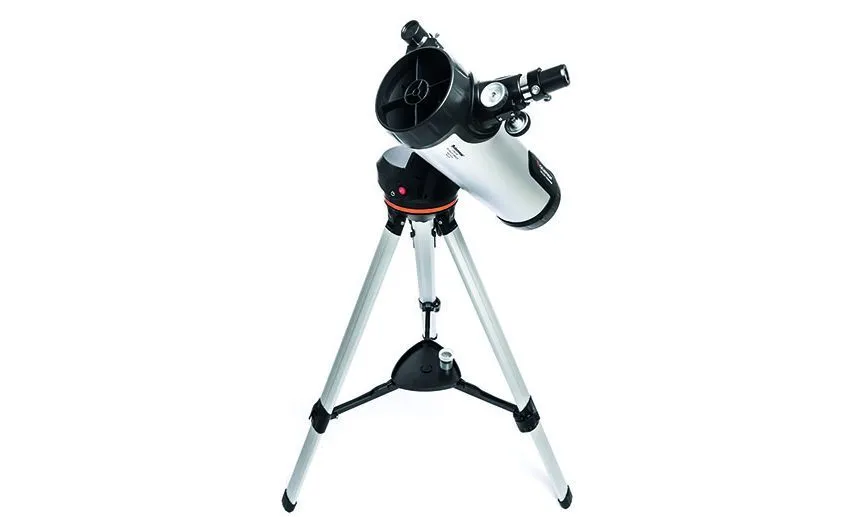
Reasonable optics and a computerised mount in this telescope give beginners a tantalising taste of what there is to see in the cosmos. And with just three components - telescope, base and tripod - setup is relatively easy too. The 114LCM comes with a hand controller featuring a database of 4,000 deep-sky objects as well as planets and stars. Weighing just 5kg, it’s an ideal telescope for kids and children to set up themselves (with guidance from an adult).
Vital Stats
- Optics 4.5-inch Newtonian
- Focal length 1000mm, f/9
- Mount Computerised Vixen-style mounting bar
- Control NexStar hand controller
- Tripod Adjustable tripod perfectly sized for children
- Power 8xAA batteries or 12V power socket
- Extras Accessories tray
- Weight 5kg
Read our full Celestron 114 LCM review
Sky-Watcher STARTRAVEL-102 (AZ-GTe)
Buy from Wex Photo Video (£285.00 £269.00)
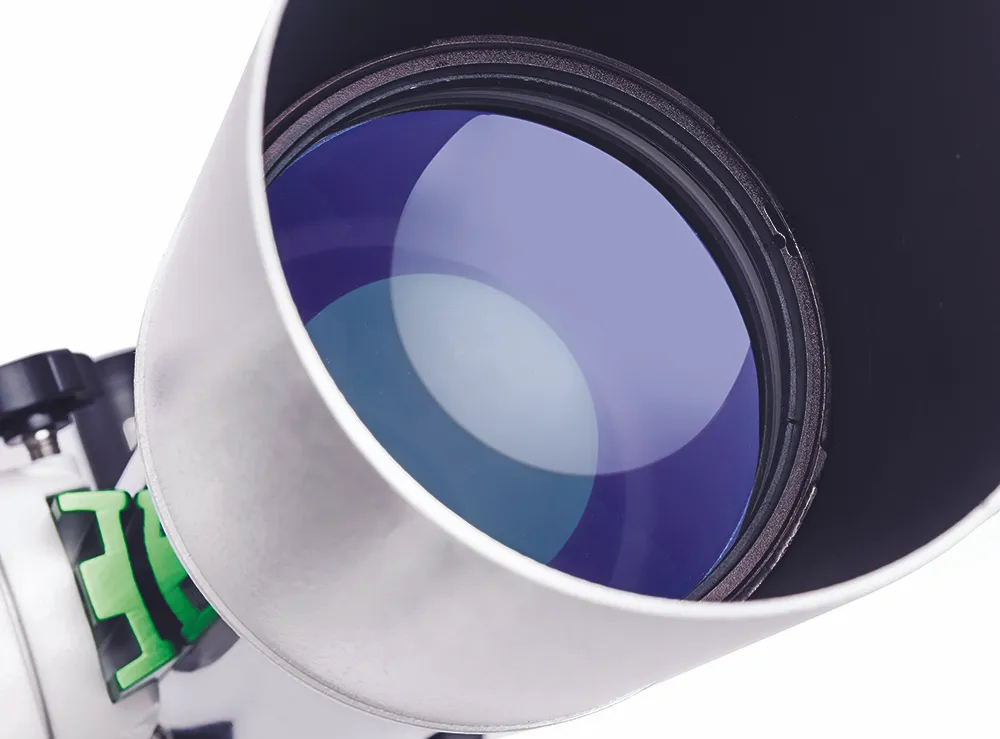
Once powered, the STARTRAVEL-102's mount produces its own Wi-Fi network, allowing kids to connect to the telescope using their mobile device or tablet. A free SynScan app for iOS or Android enables young astronomers to control the system from their device and pick out which target they want to see. Its database contains up to 10,000 objects covering a wide range of the most popular targets.
Vital Stats
- Optics 102mm, two-element, air-spaced achromatic refractor
- Focal length 500mm, f/4.9
- Mount AZ-GTe Wi-Fi Go-To altaz mount
- Ports Power connector, DSLR shutter release port, hand controller connector, Wi-Fi module
- Control Free SynScan app for iOS and Android mobile devices
- SynScan app database 10,000 objects including Messier, NGC, IC, Caldwell, Solar System and more
- Tripod Adjustable tripod with accessories tray and vertical extension
- Power 8xAA batteries or DC 7.5~14V, 0.75A tip positive
- Extras Red dot finder, 25mm and 10mm 1.25-inch fit eyepieces, star diagonal
- Weight 6.65kg
Read our full Sky-Watcher STARTRAVEL-102 review
Sky-Watcher Star Discovery 150P
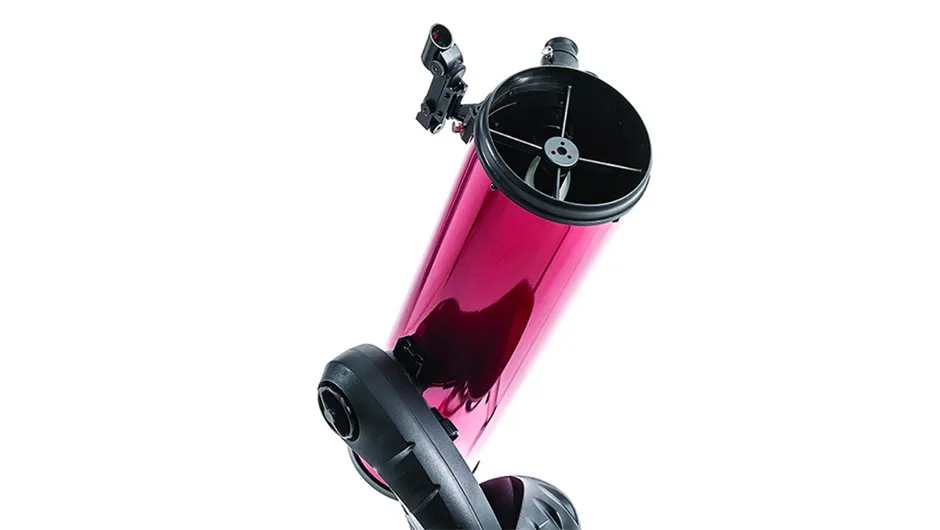
This is an ideal candidate for one of the best telescopes for kids and children to get started with under the guidance of adults, and comes with a tripod, 2 eyepieces and a threaded lens that enables a camera to be attached. The telescope offers a rich variety of targets, with nearly 43,000 objects in its database.
Vital stats
- Optics Newtonian
- Aperture 6 inches
- Focal length 750mm (f/5)
- Finderscope Red-dot finder
- Mount Battery powered single fork mount
- Eyepieces 10mm and 25mm, 1.25-inch fit
- Extras Tripod, SynScan V4 hand controller
- Weight 7kg
Read our full Sky-Watcher Star Discovery 150P review
Celestron Astro Fi 5 Schmidt-Cassegrain
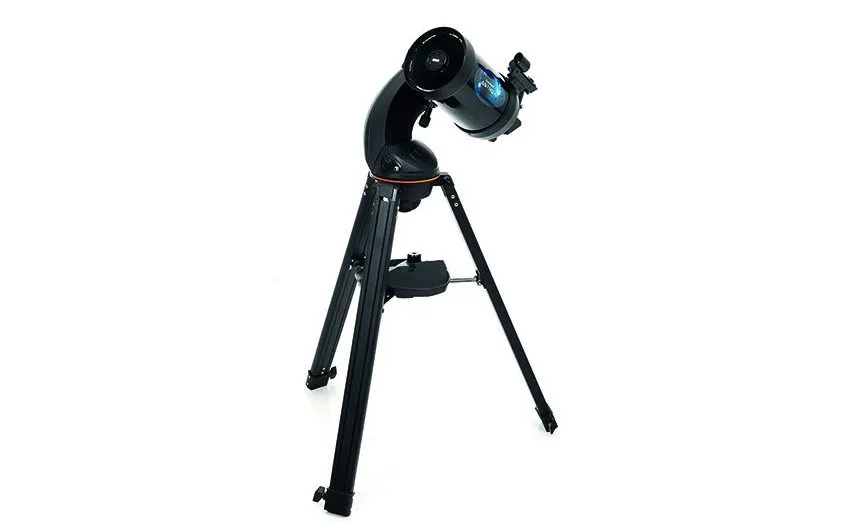
Celestron’s Astro Fi 5 is a Wi-Fi-controlled system for modern times. It has a focal length of 1,250mm and is best suited to observing planets, lunar and bright deep-sky targets. Wi-Fi/smartphone control of the Astro Fi 5 system works well, while the SkyPortal app is available for iOS or Android. Installation is fast: power up the mount and it automatically sets up a Wi-Fi spot that you can connect to. A high tech telescope for kids who are more digitally minded.
Vital Stats
- Optics Schmidt-Cassegrain
- Aperture 5 inches
- Focal length 1,250mm (f/10)
- Finderscope StarPointer red-dot
- Mount Wi-Fi single arm mount
- Eyepieces 10mm and 25mm, 1.25-inch fit
- Extras Sky portal app, diagonal
- Weight 7kg
Read our full Celestron Astro FI 5 review
Celestron NexStar Evolution 8
Buy from B&H ($2,268.95 $1,868.95)
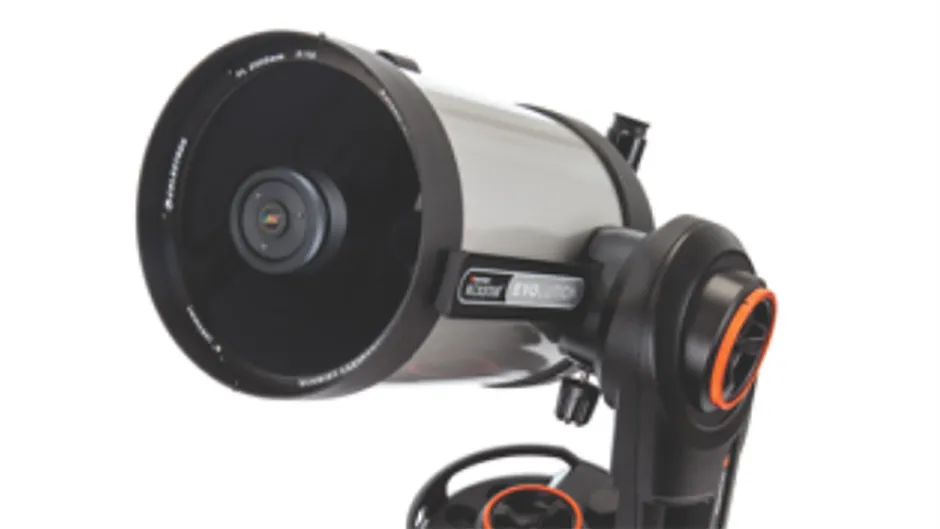
A Wi-Fi network is built into this telescope that enables kids to connect wirelessly with a smartphone or tablet to control this telescope, although a hand controller is supplied. Assembly is quick and easy and it's easy to find targets in the night sky. The eye-watering price tag may put you off if you are looking for something less pricey, but if you have a higher budget and are looking for not just the best telescope for kids and children, but one the whole family will really enjoy, this may be the one.
Vital Stats
- Aperture 203.2mm (8 inches)
- Focal Length 2,032mm (f/10)
- Eyepieces 40mm eyepiece, 13mm eyepiece
- Mount Computerised single fork arm altaz
- Weight 18.4kg
Read our full Celestron NexStar Evolution 8 review
Sky-Watcher Heritage 100P Tabletop Dobsonian
Buy from PicStop (£299.00 £258.99)
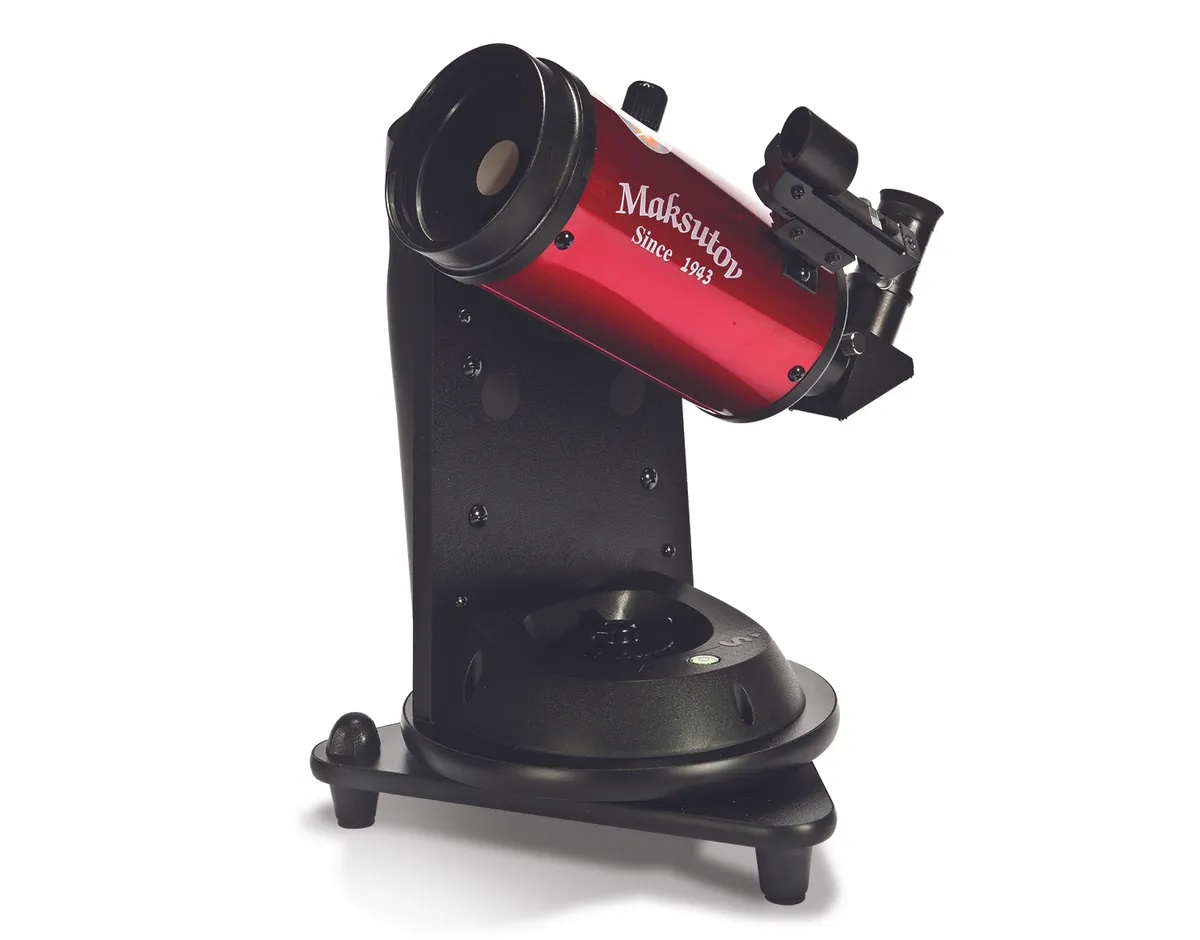
If you're considering getting a telescope for your kids or the family to enjoy, you might be worried about the hassle of setting it up. The Sky-Watcher Heritage-90 Virtuoso is all about simplicity and portability. Its maintenance-free telescope is complemented by a minimalistic altaz table-top mount. All you need to get going is a power supply and a suitable table to put it on.
Vital Stats
- Optics Maksutov-Cassegrain
- Aperture 3.5 inches
- Focal length 1,250mm (f/13.9)
- Finderscope Red-dot
- Mount Tracking altaz
- Eyepieces 10mm and 25mm, 1.25-inch fit
- Extras 90° mirror diagonal, camera bracket, shutter release cable for Canon DSLRs
- Weight 5.1kg
Read our full Sky-Watcher Heritage-90 review
Sky-Watcher SKYMAX-127 (AZ-GTi) WiFi controlled Alt-Az mount
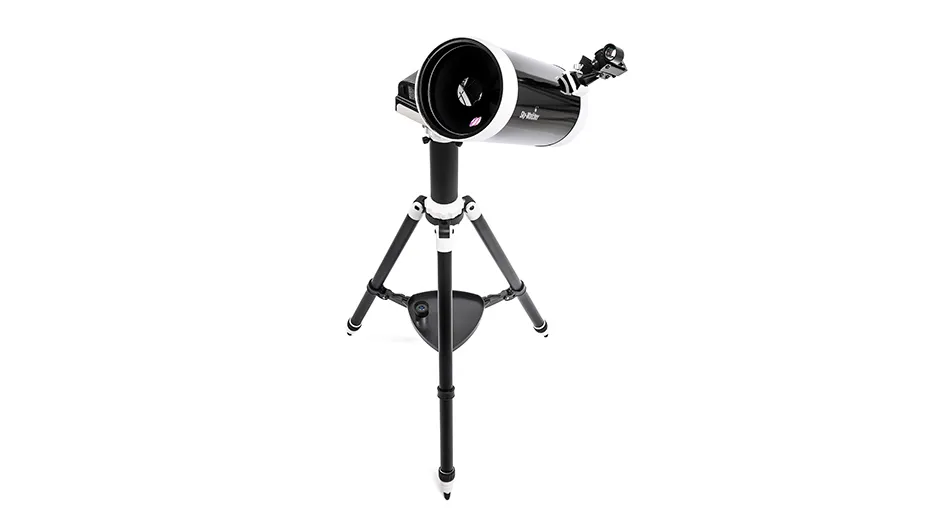
This is another wirelessly-operated telescope that can be controlled with a smartphone, so is an ideal telescope for kids who enjoy a bit of tech. The mount provides its own Wi-Fi network, which you connect to via an app. The app will also ask for permission to access your location, which it uses to determine basic details.
Vital Stats
- Optics Maksutov
- Aperture 127mm
- Focal length 1500mm (f/11.8)
- Finderscope Red dot finder
- Mount Alt-az Wi-Fi GoTo mount
- Eyepieces 10mm and 25mm, both 1.25-inch fit
- Weight 7.45kg
Read our full SKYMAX-127 review
Sky-Watcher SkyHawk 1145P SynScan altaz Go-To Newtonian
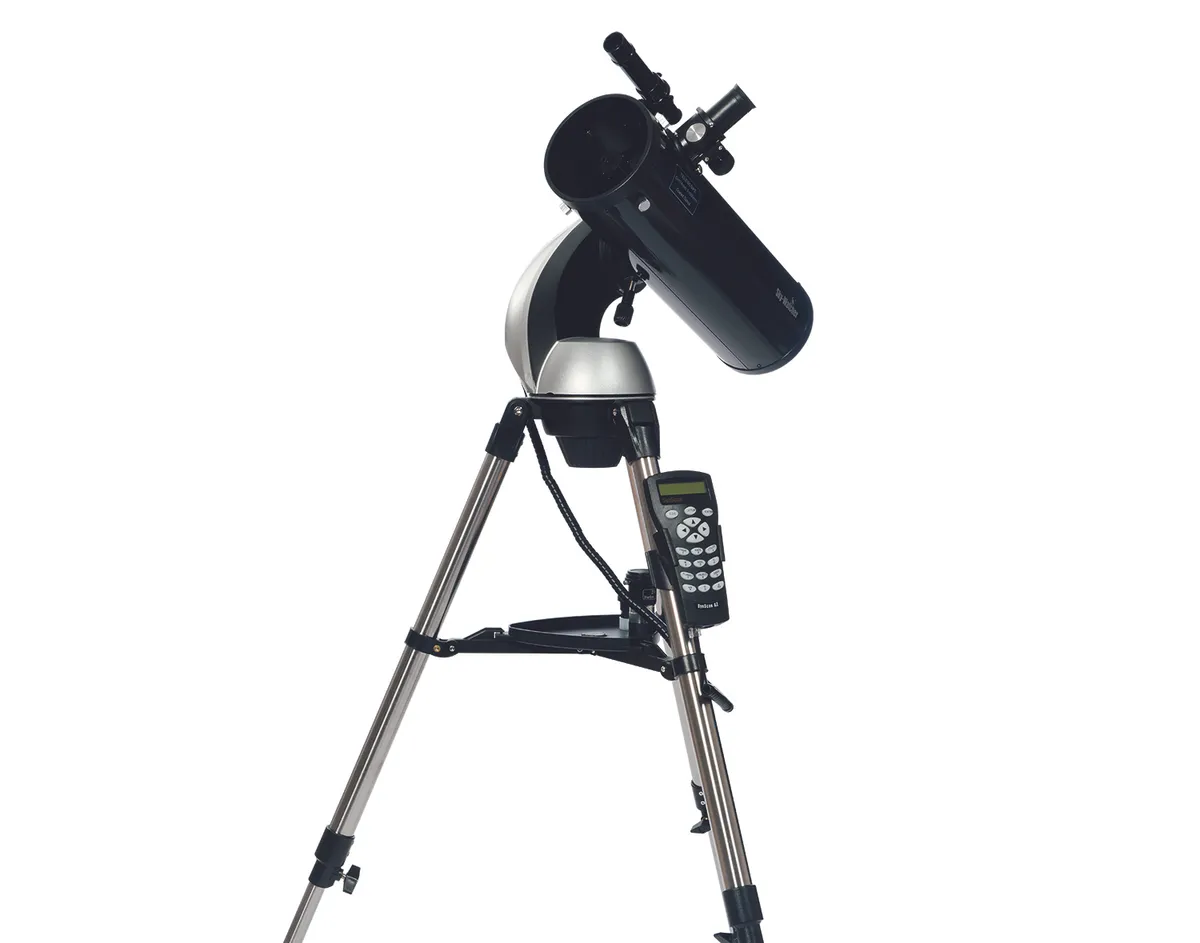
This telescope's mount is lightweight, making transporting it fully assembled very easy. We were pleasantly surprised at how accurately the Go-To functioned, with each object appearing near the centre of the 25mm eyepiece’s field of view. The SkyHawk certainly puts the fun into astronomy with its quick setup, accurate Go-To function and no-nonsense optics, all of which are great options when looking for the best telescope for kids and children.
Vital Stats
- Optics Parabolic Newtonian
- Aperture 114mm (4.5 inches)
- Focal length 500mm (f/5)
- Finderscope 6x24 finderscope
- Mount Computerised altaz HD Go-To
- Eyepieces 10mm and 25mm, both 1.25-inch fit
- Extras 2x Barlow lens, 1.25-inch fit
- Weight 6.3kg
Read our full Sky-Watcher SkyHawk 1145P review
Celestron Inspire 100AZ refractor
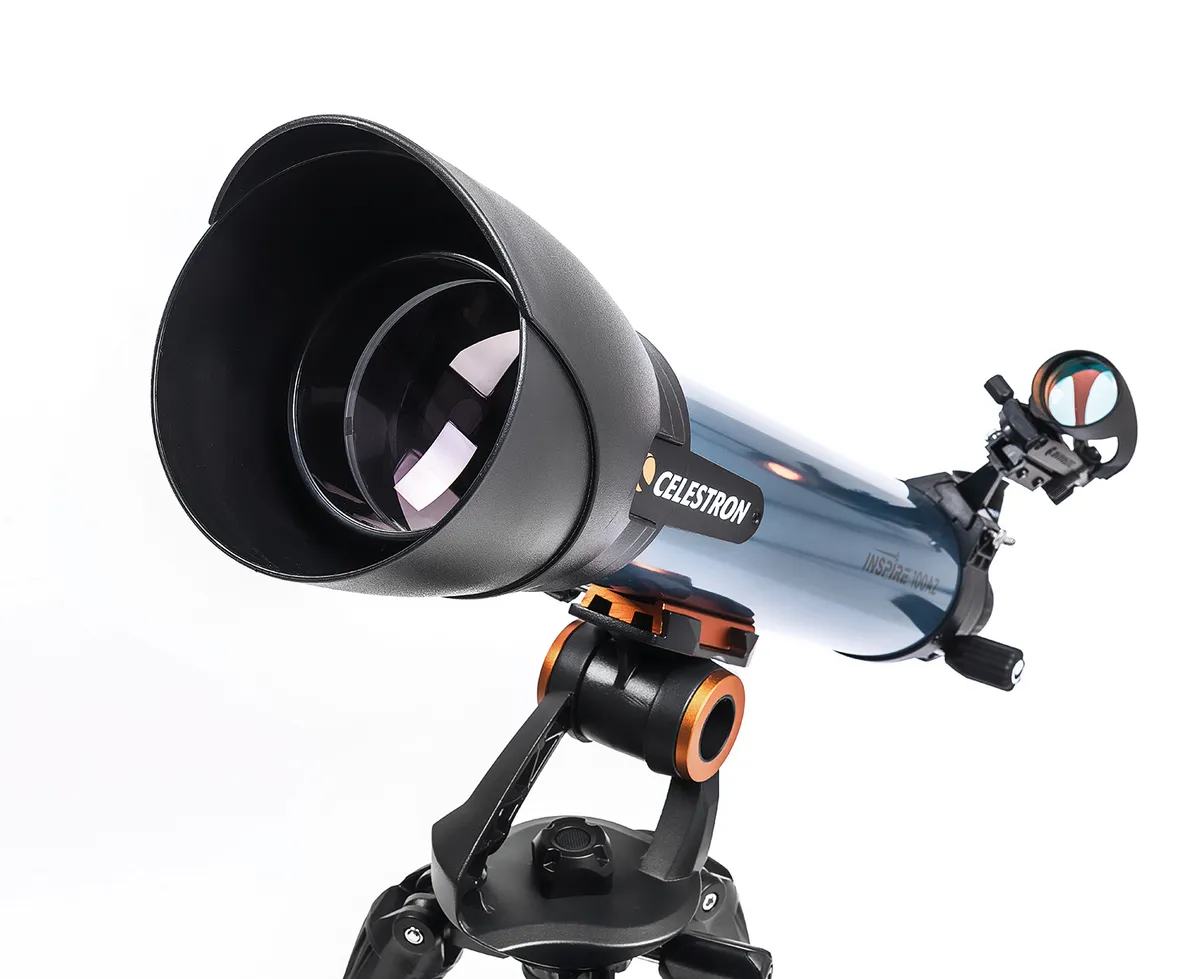
The attractive design and affordability of the Celestron Inspire 100AZ make it a great option for kids and young astronomers. It offers good aperture and 660mm focal length at a reasonable cost, and is pretty much a complete observing telescope package.
The tripod has a robust pan and tilt head with 32mm-diameter, stainless-steel and, importantly for kids, adjustable-height legs.
20mm and 10mm Kellner eyepieces are supplied, and there’s also a 90° erect image diagonal included. Completing the package is a red light LED torch, accessory tray/leg spreader and a dual-purpose dust cap.
The whole setup is light and easy to carry around even when it’s fully assembled, making it a good telescopes for kids and young astronomers to get on with observing as quickly as possible.
What's more, it comes with its own smartphone telescope adapter, allowing youngsters to photograph what they see on their smartphones and share on social media.
Vital Stats
- Optics Achromatic lens
- Aperture 100mm (4 inches)
- Focal Length 660mm, (f/6.5)
- Focuser Single-speed rack and pinion with micrometer scale
- Mount Manual Altazimuth
- Extras Red-dot finder, erect image star diagonal, 10mm and 20mm eyepieces, red light LED torch, printed instruction manual
- Weight 6.1kg
Read our full Celestron Inspire 100AZ refractor review
Starbase 80 refractor and mount package
Buy from First Light Optics (£649.00)
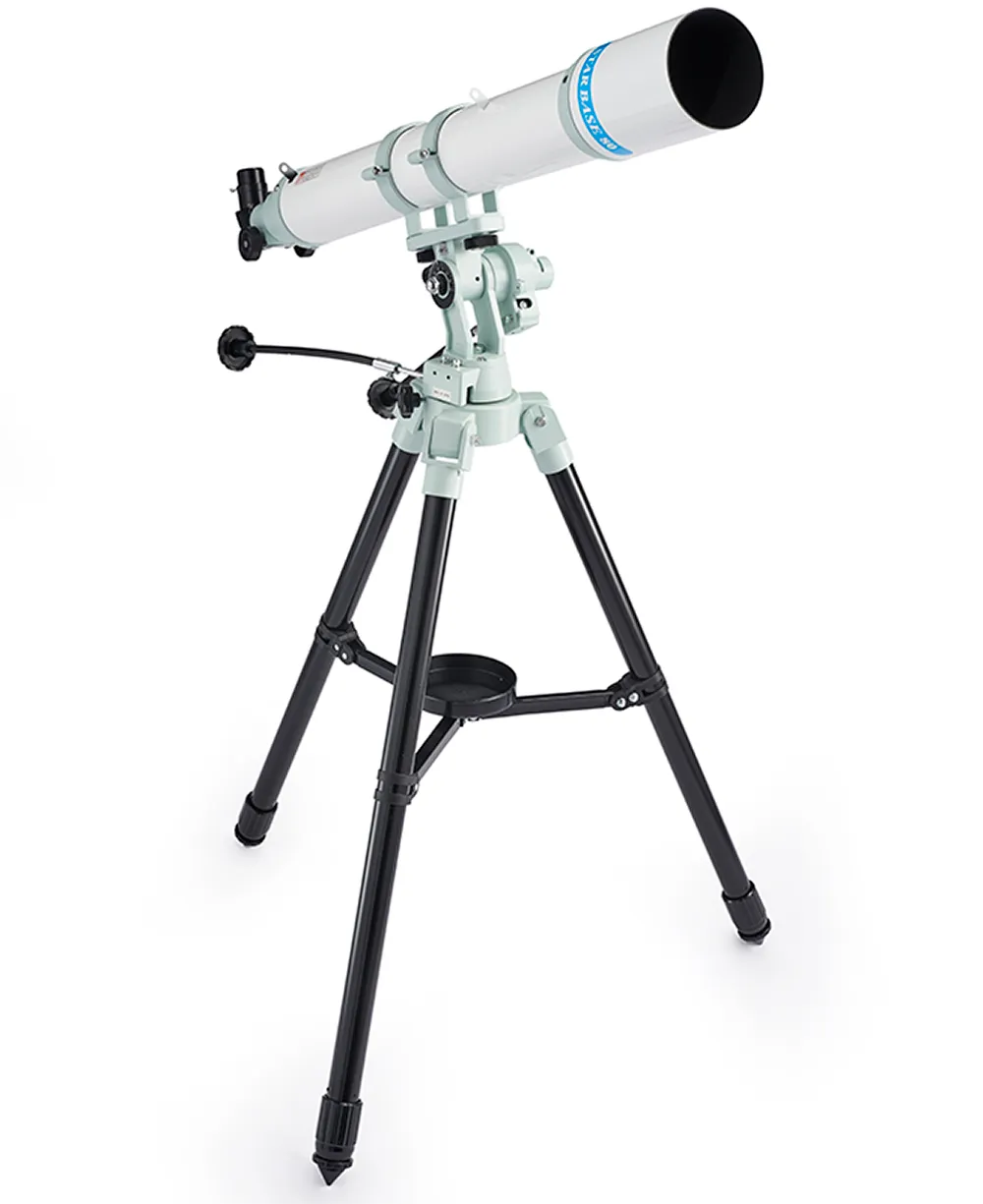
This is a great entry-level, grab-and-go telescope that comes on a portable, sturdy and durable altaz mount.
Assembly is straightforward, with the mount and tripod in one section, so you just need to attach tube and rings before adding the slow-motion controls and altitude clamp.
Operation is smooth and we got great views of the Orion Nebula, the Pleiades, the Andromeda Galaxy and double stars: all exciting and accessible deep-sky objects perfect for young astronomers.
Vital stats
- Optics 80mm
- Focal length 800mm (f/10) focal length
- Mount Altaz mount with adjustable steel tripod
- Focuser Rack and pinion
- Extras Peep hole finder, 6mm & 14mm 1.25 inch-fit eyepieces, smooth slow-motion control cables, star diagonal and accessories tray
- Weight 6kg
Read our full Starbase 80 telescope review
Buying telescopes for kids and children second hand
Telescopes are expensive, but thankfully there is a thriving second hand market.
We have a full guide of what you should look out for when buying a telescope second hand, but below we've included several telescopes that are no longer widely available commercially, but which you might be able to find on the second hand market.
Meade LightBridge Mini 82mm
Check availability at Cameraland
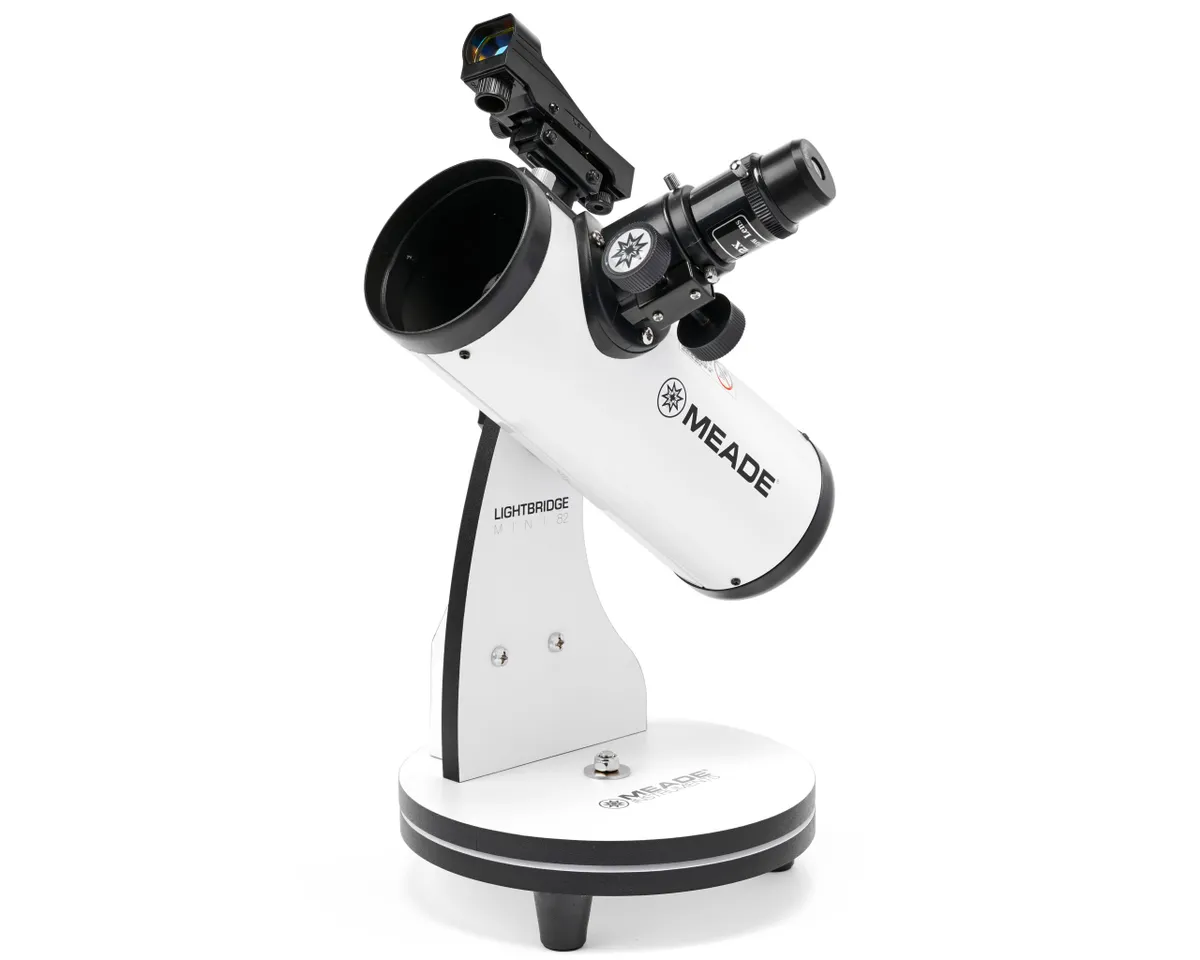
Much like the Heritage-76 and Orion FunScope, the LightBridge is a tabletop telescope, though it has a bit more aperture at 82mm. This increases light sensitivity and allows it to show more detail from the objects you want to observe while still remaining compact.
This time, we found a 2x Barlow lens and red-dot finder (battery supplied) accompanying the eyepieces. The kit also comes with a planetarium app you can install on a computer. The red-dot finder has a nice wide screen, which increases its ease of use.While stars could be sharper, the eyepieces are of fair quality.
The instructions are not child-friendly at first glance, with a large booklet and some intimidating-looking text accompanying the kit. But further investigation revealed that many of these instructions don’t apply to this model so can be disregarded.
Vital Stats
- Optics 82mm
- Focal length 300mm, f/3.7
- Mount Tabletop Dobsonian-style mount
- Extras 26mm and 9mm eyepieces, 2x barlow lens, red-dot viewfinder, Autostar Suit Astronomy planetarium DVD
- Weight 1.7kg
Orion FunScope 76mm
Check availability at Amazon
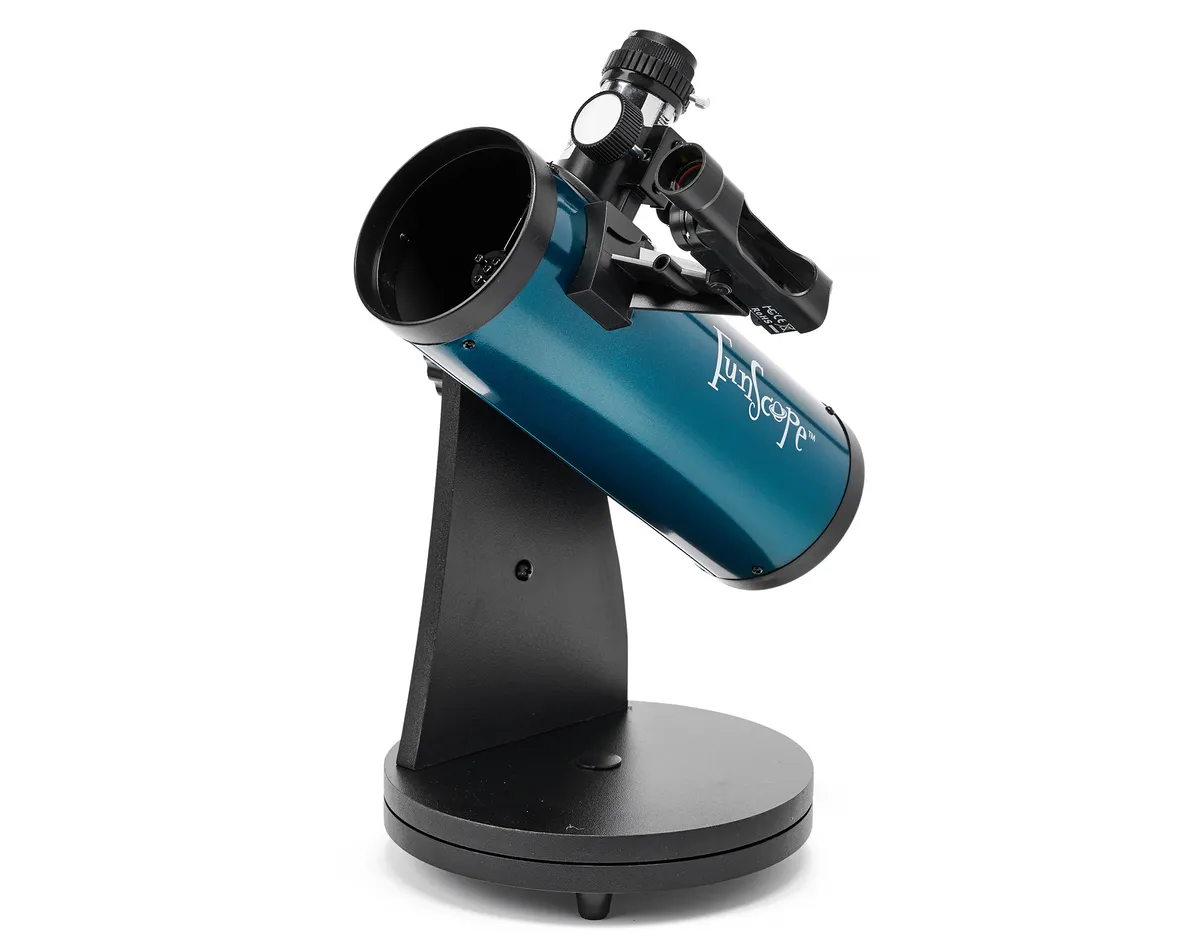
The FunScope comes with a Moon map, which invokes a sense of exploration and helps young astronomers to navigate around lunar craters and seas.It’s almost identical to the Heritage-76 in design, but introduces a slot-in EZ Finder II Reflex Sight instead of a finderscope, which we think is a better addition.
Once there’s an eyepiece attached, however, the setup becomes top-heavy and doesn’t balance. But this issue is not overly important since the telescope has a locking mount.We swung this scope over to the Pleiades and while the stars were sharp at the centre of the field of view, there was distortion at the edges. Nevertheless, it proved good at lunar observation and the Moon map will ensure children want to use this again.
What to look for in a kids telescope
With so many options it's easy to get lost when trying to make a decision of which might be the best telescope for your children. So here's a reminder of what to look out for.
You'll want an easy set up. Little astronomers can easily become bored if you have to spend half an hour aligning the telescope before you can see anything..
Take a look at the mount and tripod - will you be able to adjust the height so your child can look through the eyepiece by themselves? You don't want to have to lift them up just so they can see.
Many telescopes can be controlled through an app so that they automatically point towards their key targets. As well as making it much easier to locate objects on the night sky, it can also help catch the interest of more tech-savvy kids.
Make sure they're robust enough to withstand a few knocks and bumps as children aren't always the most careful of astronomers.
There are a lot of cheap, toy telescopes out there which use poor-quality optics, so look for reputable brands which are known for making adult telescopes as well as children's ones.
Hopefully we've given all the information you need to find the best telescope for your kids to get them interested in astronomy.
If their first telescope is a present, you might also want to take a look at our list of best space themed gifts for kids to make their gift a truly memorable one.
Once you've made your choice and purchased your child's first telescope, have a read through our guide to stargazing with kids for tips on how to get them scanning their way across the night sky.
If you're looking for other ways to help kids learn the night sky without venturing out into the night, take a look at our list of the best star and galaxy projectors. Or take a look through our DIY section, where we have lots of space themed activities and builds to help kids learn about the cosmos.
Do you know a young astronomer who loves their telescope? Is it on our list? If not, let us know and we'll look into reviewing it! Get in touch via contactus@skyatnightmagazine.com.
